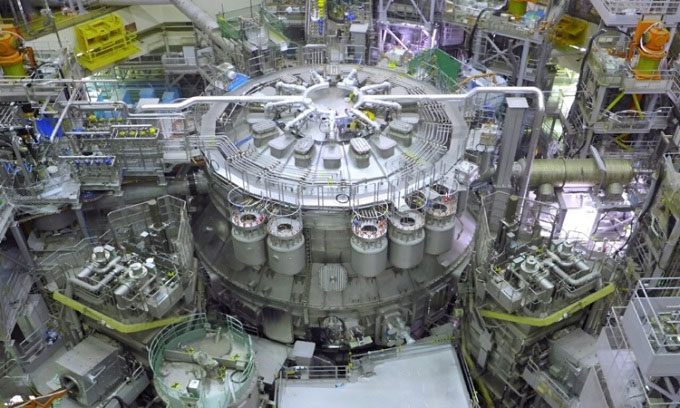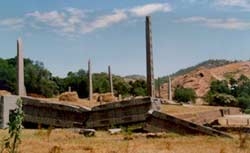The JT-60SA reactor, towering as high as a six-story building in Japan, is set to generate plasma heated to 200 million degrees Celsius, paving the way for achieving pure energy from nuclear fusion reactions.
The world’s largest operational nuclear fusion experimental reactor was inaugurated in Japan on December 1. Although still in its early stages, this technology promises to be a solution for humanity’s future energy needs, according to Phys.org.

The JT-60SA is the world’s largest nuclear fusion experimental reactor. (Photo: Phys.org)
Nuclear fusion energy differs from the fission energy currently used in nuclear power plants, as it involves the merging of two atomic nuclei rather than splitting them apart. The goal of the JT-60SA reactor is to test the feasibility of nuclear fusion as a safe energy source that can be deployed on a large scale without carbon emissions, while also producing more energy than it consumes (net energy).
This six-story-high machine is located in a storage facility in Naka, north of Tokyo, and features a toroidal tokamak reactor designed to contain a swirling plasma heated to 200 million degrees Celsius. This project is a collaboration between the European Union and Japan and serves as a precursor to a larger version being constructed in France known as the International Thermonuclear Experimental Reactor (ITER). The ultimate goal of both projects is to fuse hydrogen atoms into heavier helium atoms, releasing energy in the form of light and heat, simulating the processes occurring inside the Sun. The research team at ITER hopes to achieve the ultimate goal of fusion technology: net energy.
Sam Davis, Deputy Project Leader of JT-60SA, stated that the device will bring humanity closer to harnessing fusion energy. This achievement is the result of collaboration among over 500 scientists, engineers, and more than 700 companies across Europe and Japan. Kadri Simson, the European Union’s Commissioner for Energy, described JT-60SA as the most advanced tokamak reactor in the world.
Meanwhile, the National Ignition Facility at Lawrence Livermore Laboratory in the U.S. achieved a net energy gain last December. They employed a different method than ITER and JT-60SA, known as inertial confinement fusion, where a high-energy laser beam is simultaneously directed at a small cylinder containing hydrogen. The U.S. government hailed this result as a significant milestone in the quest for clean, limitless energy, aiming to end dependence on carbon-emitting fossil fuels that contribute to climate change. Unlike fission reactions, fusion reactions pose fewer accident risks and produce less radioactive waste than current power plants.





















































